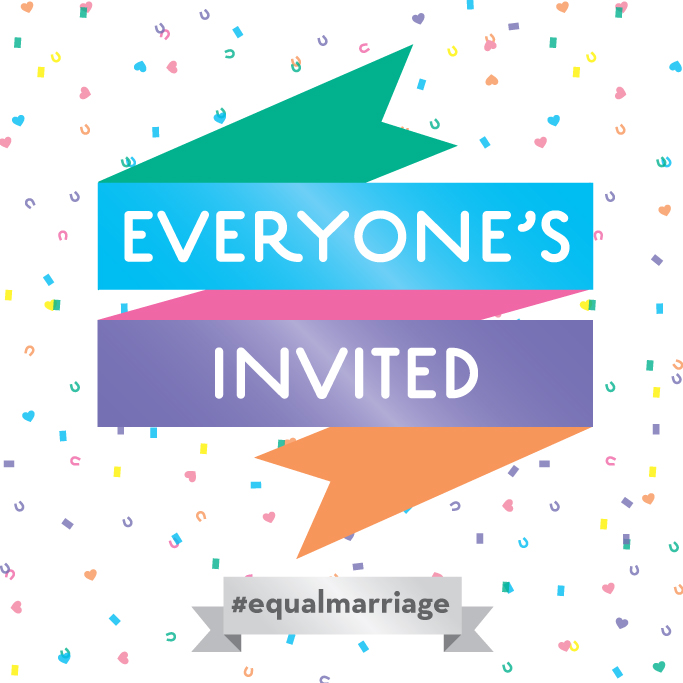Same-Sex Marriage and (In)Equality?
by Claudia Carvell

After the Republic of Ireland voted ‘yes’ to same-sex marriage last week, it is now legal in 20 countries across the world. For many people, this is the epitome of equality – the ability to have one’s loving/romantic relationship sanctioned by the state through the age-old tradition of marriage. However (without wanting to be a kill-joy in the midst of celebration) this is not the case for everyone.
To begin with, as trans activists and communities have been expressing since same-sex marriage was introduced in the U.K., its not necessarily trans inclusive, in fact in England and Wales, its actually anti-trans inclusive thanks to this clause entitled the Spousal Veto. In a married couple in which one member is trans and is attempting to get their gender legally recognised, the Spousal Veto functions by giving the non-trans spouse the final say as to whether or not this gender recognition is allowed.
This is based on the acknowledgement that if the trans person’s gender is recognised, the status of their marriage would change from heterosexual to same-sex and thus implies the fundamental inequality between the two types of marriage. Furthermore, the trans person’s autonomy in existing as they so choose is displaced through granting this autonomy to their non-trans spouse, and the latter cisgendered person’s feelings are put above the former transgendered person’s needs.
Now, in an ideal(ogical) world where marriage = love = respect at all times in all cases, this may not seem like an issue, however in reality this clause currently impacts negatively on many trans people. In a recent survey done by activist Zoe Kirk-Robinson, it was found that 40% of spouses actively attempted to prevent their partner transitioning, over 28% made divorce (which is necessary to achieve a gender recognition certificate without spouses approval) as difficult as possible, and 46% were unable to see their children as a result of their trans status.
As this indicates, the Spousal Veto prevents same-sex marriage from truly enabling equality as it privileges cisgendered people over transgendered people entirely… and this is exactly why England and Wales are the only two European countries to have legalised same-sex marriage and include this clause. Whilst it’s too soon to tell what Ireland will choose to do, the other 10 European countries, including Scotland, have recognised the discrimination and fundamental inequality inherent in the Spousal Veto. Thanks to the efforts of activists, Scotland has also enabled gender-neutral marriage ceremonies to extend marriage to people with non-binary and no-gender identities.
Now if you’re not trans, and trans rights aren’t at the forefront of your priorities, you may wonder why you should care if same-sex marriage in England and Wales isn’t as inclusive as you assumed it was. And I’m definitely not going to be the person to answer that, especially as, despite wanting to be in solidarity with trans rights, a part of me still dreams of a big wedding and a white dress. But what I will do is explain one more reason why same-sex marriage isn’t all that equalising.
The institution of marriage legitimises and idolises monogamous couples only. This relationship formation sits at the top of the hierarchy because it is seen to be the ideal context in which to raise children. However, as a result of this, sexual orientations or preferences that are not monogamous or coupled – most notably polyamory – remain delegitimised and largely unacceptable, often being dismissed as promiscuity and/or immaturity. This is problematic because, again like the Spousal Veto, the individual’s ability to have their choices validated (like cisgendered, monogamous couples can now do easily) is blocked by an exclusive formulation of marriage rather than an inclusive one. The argument against this often surrounds the religious foundation of marriage, but we live in a secular country, and having a religion is not a prerequisite for getting married here therefore, in my opinion, it doesn’t make sense that certain people are excluded on these terms.
There’s also the argument that marriage is about recognising a certain kind of love (the monogamous coupled kind) and that to include polyamorous relationships would be undermining marriage. But that doesn’t quite explain the economical, legal and social advantages granted to married couples – such as tax allowances and pension schemes - that have nothing at all to do with love. By rewarding some people for complying with a state sanctioned norm, it successfully punishes those who do not – and proliferates the message that - based on their sexual and/or relationship preferences - some people are more worthy of state benefits than others. Therefore, whilst same-sex marriage has successfully widened the boundaries of inclusion and given some people the right to marry who they want, it’s a far cry from equality; in fact, it’s not even close.
So whilst others celebrate that same-sex marriage is legal in the U.K. and even more people are welcomed into the inner-circle of legitimisation, I’m choosing to turn my attention towards those who have not been welcomed in, and question how equality can be achieved whilst hierarchies of genders, sexualities and relationships are still maintained.